Weedwork Online Toolkit
4 Common Riparian Weeds in the South West and their Management
Compiled by the Lower Blackwood LCDC
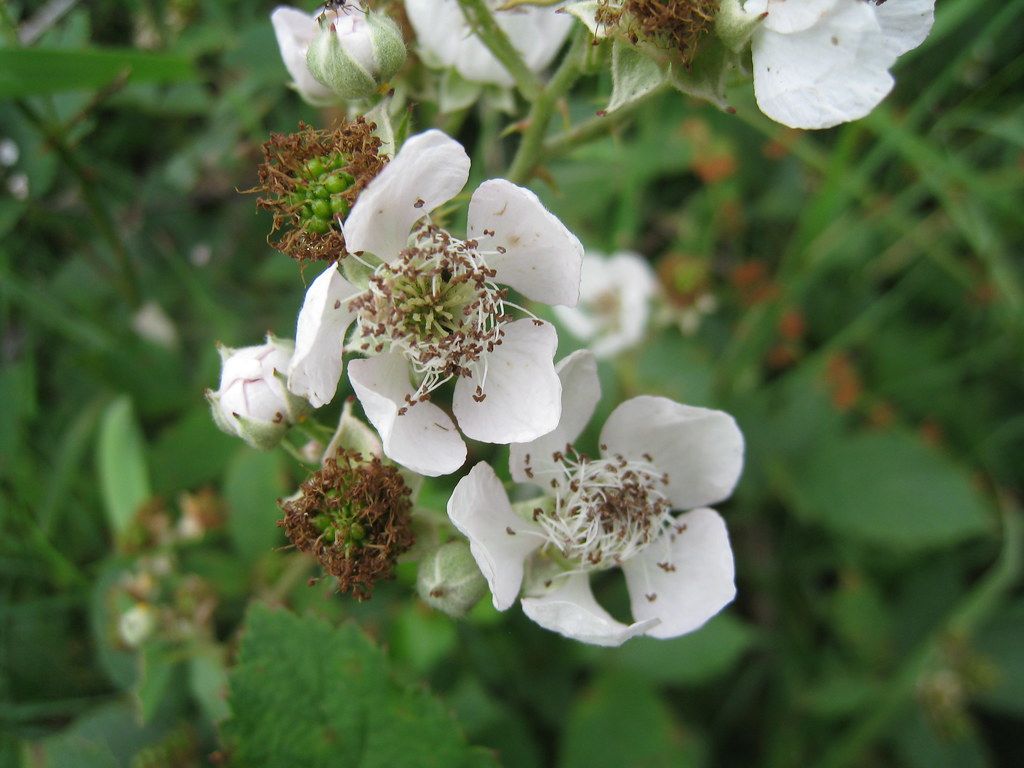
1. Arum Lily
Zantedeschia aethiopica
Arum Lilies are a widespread conspicuous plant primarily found in wet, swampy habitats. These lilies were originally introduced from South Africa for horticulture purposes. Arum Lilies are Declared Plants in Western Australia and all movement is prohibited.
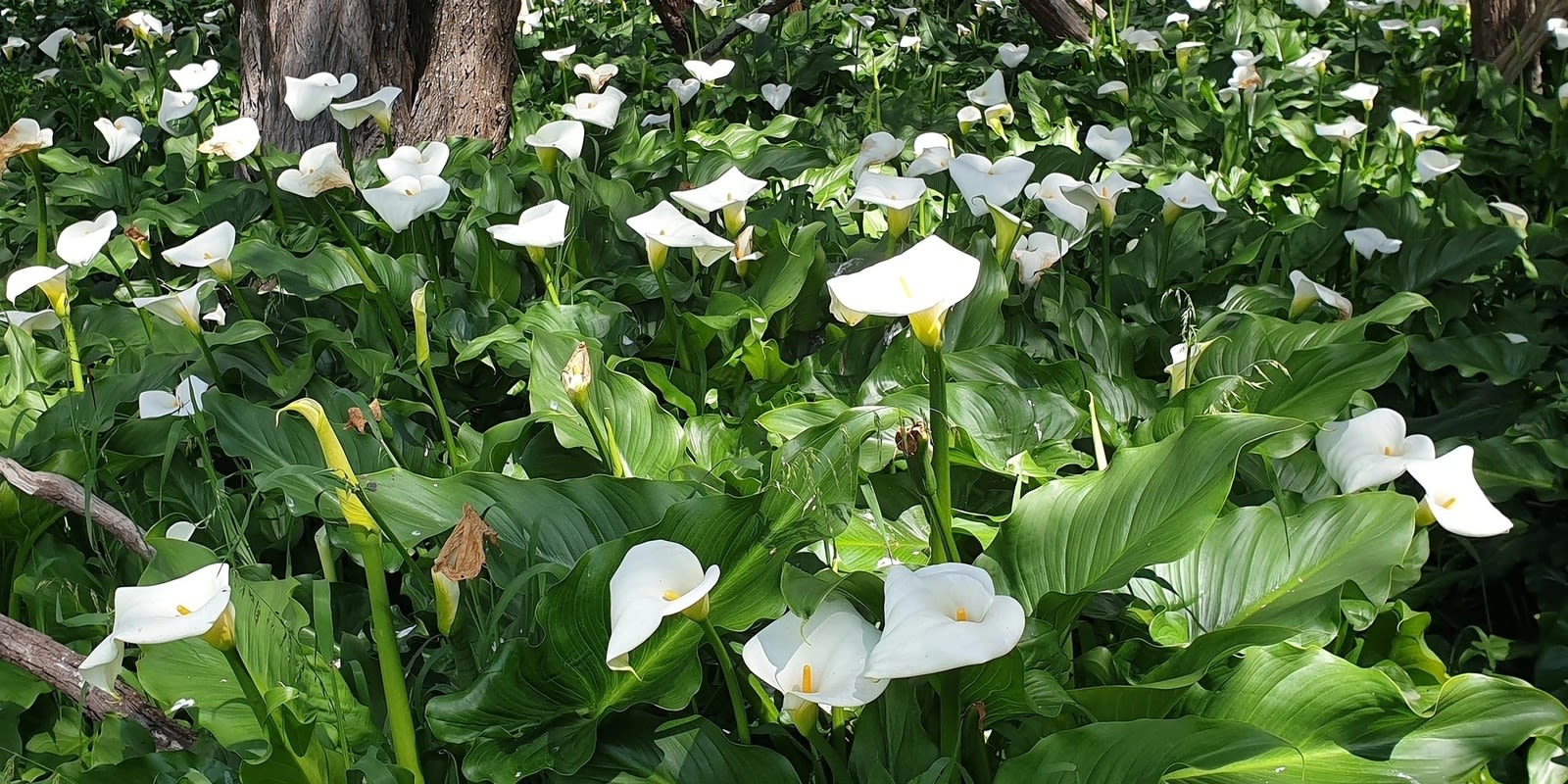
The Problem and Impact
Arum Lily is the worst environmental weed in the Capes region. It occurs in both pasture, plantation and bushland, particularly in damp areas but also invading drier sites. Arum lily is spread by birds and the disturbance of rhizomes (just the smallest piece of rhizome can create a new plant) and invades areas of good quality native vegetation.
The impacts of Arum Lily include:
- Forming of dense monocultures & out competing native species, reducing biodiversity and decreasing habitat and food resources for native animals.
- Arum lily is poisonous to most stock, pets and humans. Symptoms can include swelling of the tongue and throat, stomach pain, vomiting and severe diarrhoea. Ingestion of the plant may be fatal.
Arum lily is listed as a Declared Plant under the Biosecurity and Agriculture Management Act 2007. Under the Act landholders are required to manage arum lily to reduce the size of infestations and prevent the spread of the weed.
Sightings can be reported on MyWeedWatcher
Growth Habit & Biological Weak Link
Arum Lily is a rhizomatous (tuber-like) perennial to 1m high that forms dense clumps of distinctive large green leaves and trumpet like white flowers.
Its preferred habitat in the south west is wetlands, along rivers, streams or creeks, wet areas, low-lying pastures, under trees where birds perch, in dunes and coastal heath, and gardens.
Arum Lily’s biological weak link is when it is actively growing from June through to November, with the optimum time for control when at least 50 to 70% of flowers are present (July to October) or until the flowers start to wither.
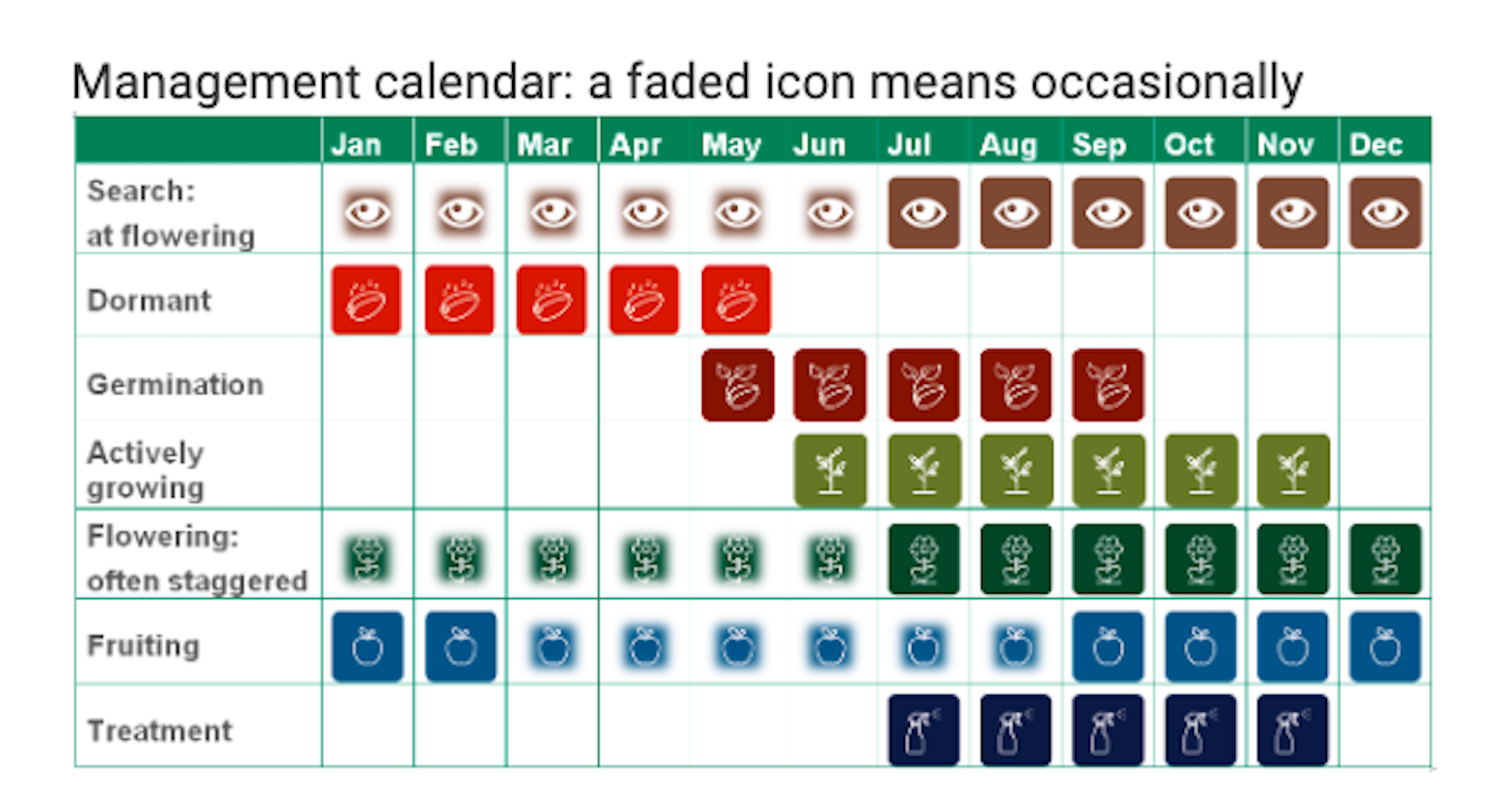
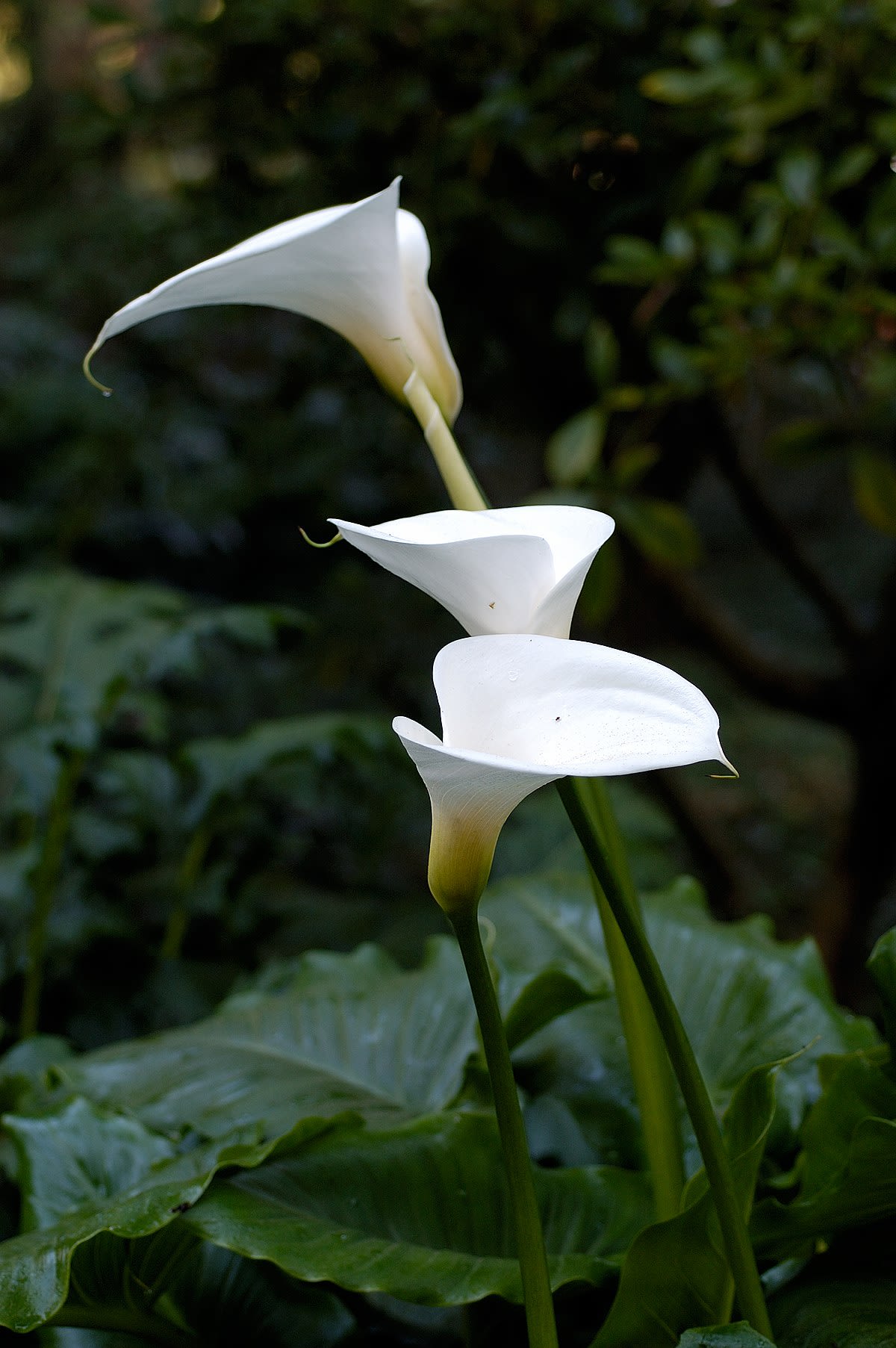
Management & Control Options
Plants produce large amounts of seed towards the end of the flowering season. The seeds are held within succulent berries and birds are the main vectors of dispersal. As well as reproducing via seed, Arum Lily reproduces vegetatively via small rhizomes produced on the sides of the main tuber. A two centimetre tuber can produce 25-30 small rhizomes in a year.
Your control plan must take into account both forms of reproduction – plants growing from surviving daughter rhizomes are not usually visible until two years after the initial spraying so the likelihood of reinfestation from surrounding areas will necessitate an on-going program of control.

Chemical and Physical Controls
Chemical
What?
Use a mixture of 1 gm of Chlorsulfuron or Metsulfuron per 10 L water. A wetting agent or detergent should be added to improve the performance of the chemical. A penetrant such as Pulse can be used to improve effectiveness, particularly on older, well established plants.
How?
Spray leaves to the point of runoff. Off-target species can also be killed so it is important to apply the herbicide carefully to the arum lily leaves only. Please note that Chlorsulfuron and Metsulfuron are very slow acting chemicals. You may not see the result of the chemical for up to 2 months.
Physical
How?
Hand removal of the plant is only effective if the tuberous rhizome and daughter rhizomes are removed. The resulting soil disturbance may encourage germination and establishment of other weeds. Removal of flowers will prevent birds spreading seeds.
Rehabilitation & Prevention
Where arum lily occurs sparsely or isolated patches in good quality native vegetation, the gap created by removal is small and quickly colonised by native species. However, where arum lily grows as a dense monoculture removal will leave an area susceptible to invasion by other weeds. Control of these weeds may help facilitate establishment of native plants. Consideration should also be given to direct seeding or revegetation with local native species.

2. Blackberry
Rubus fruticosus aggreagte
In the south west of Western Australia the most common species of blackberry found is Rubus anglocandicans (Common Blackberry), also present but less common is Rubus ulmifolius (Small Leaf Blackberry).
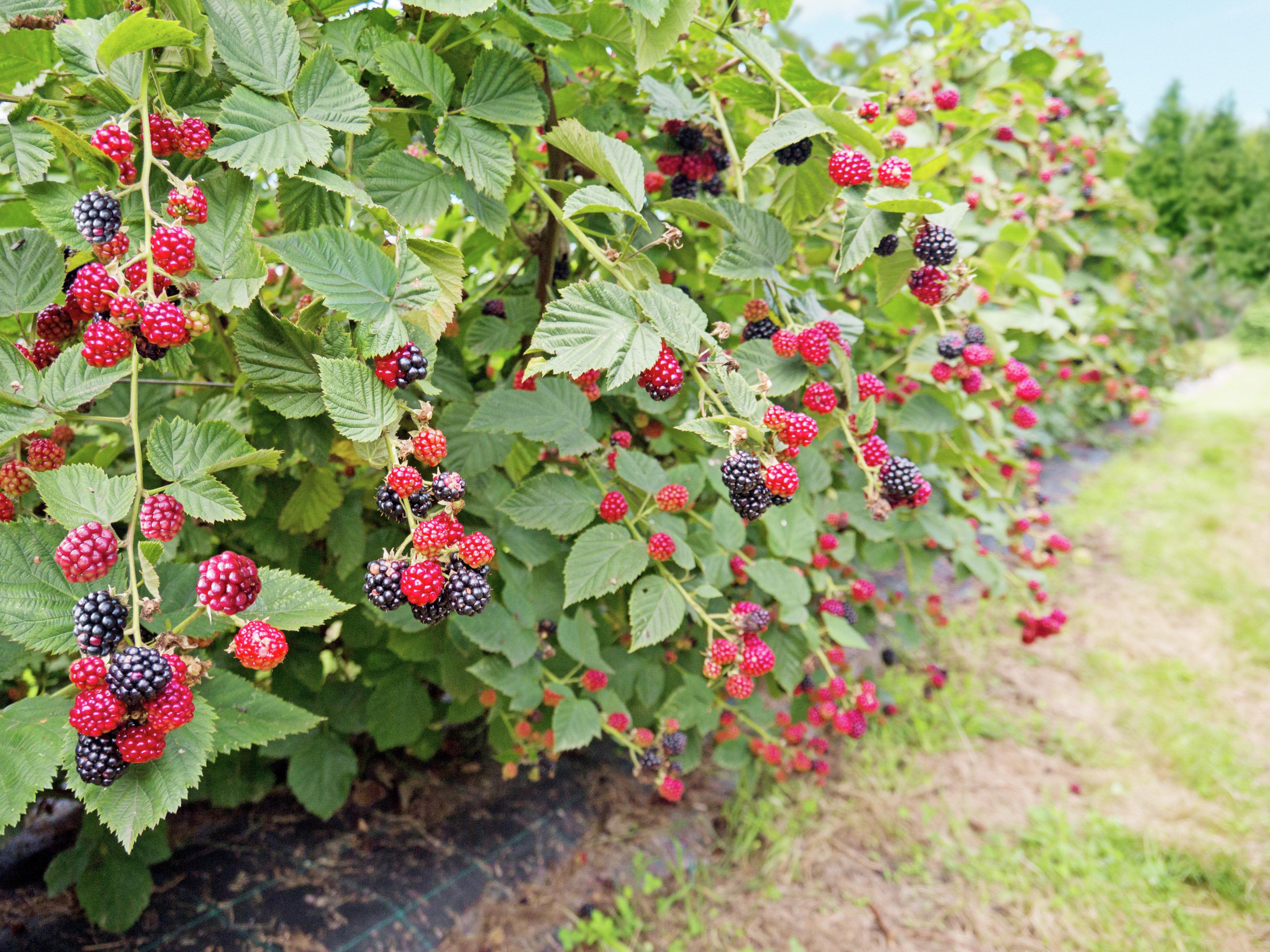
The Problem and Impact
Blackberry was originally introduced into WA for its fruit but has since become a serious environmental weed growing along rivers, creeks & wetlands between Perth & Albany.
Its prickly stems (canes) can take root simply where they touch the ground, and can form dense impenetrable thickets up to several metres high.
Blackberry will persist indefinitely in an area unless it is treated. Plants that die are replaced by seedlings or daughter plants produced by nearby individuals. Plants may produce up to 13,000 seeds per square metre. This, combined with very rapid growth (50–80 mm a day in spring), means blackberry can take over an area fast, as a consequence Blackberry is regarded as one of the worst weeds in Australia.
Impacts include:
- Crowding out of native species
- Provision of habitat for pest animals
- Reduction of pasture production
- Restricting access to water & land
- Increasing fire hazard through dead material in thickets Decreasing property amenity & value
Growth Habit & Biological Weak Link
Blackberry is a perennial, semi-deciduous shrub with prickly stems.
R. anglocandicans has palmate leaves with a smooth green upper surface & a somewhat hairy, white under surface. The stems are green, light brown or purple. It produces white flowers in the summer, with the fruits ripening in late summer.
R. ulmifolius has palmate leaves with a white hairy under surface & pink flowers that are produced in summer.
Blackberry's biological weak link for an established plant is when it is actively growing - during its fruiting & flowering season (September to April), & at the seedling stage for new plants (September to December).
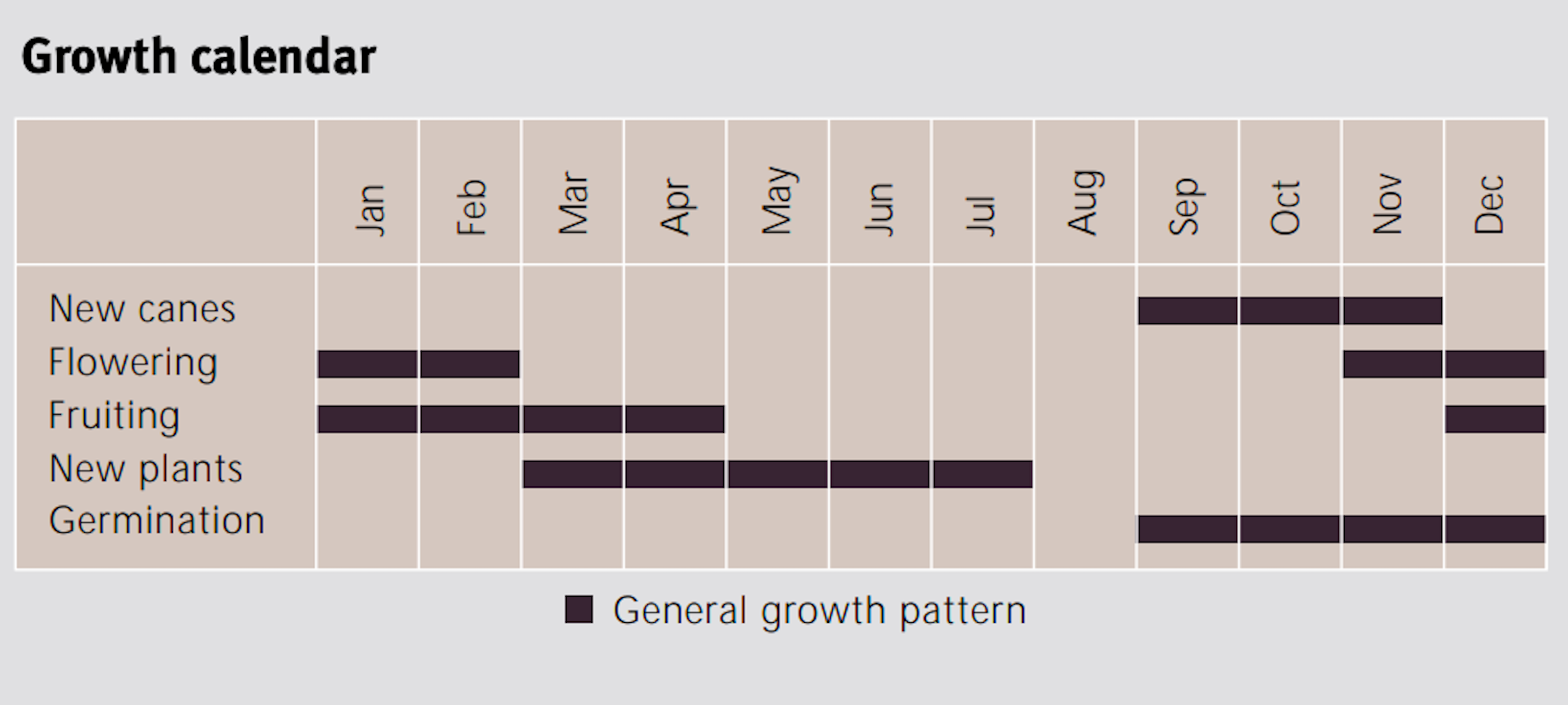
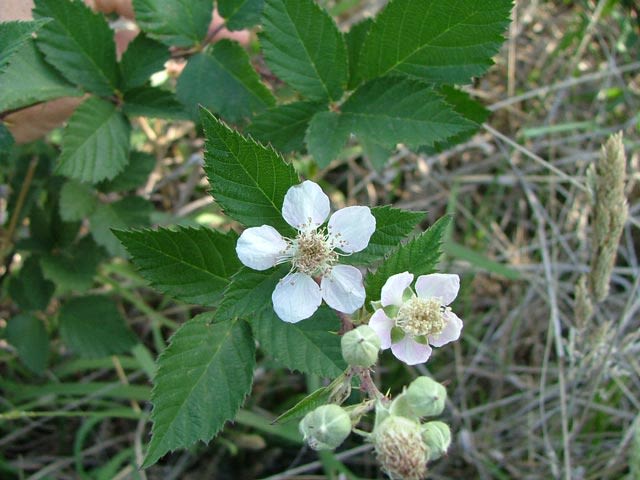
Management & Control Options
Be prepared to have a multi season strategy & be persistent over a number of seasons. A 3- pronged approach is required to meet the challenge of managing blackberry:
- Take action to prevent its spread
- Take action to control existing & reduce existing infestations
- Rehabilitate treated areas to prevent re-infestation

Chemical Control
How?
High volume spot spraying is recommended, aiming for good coverage inside the bush then outside on all sides of the leaf, runners & tips. Take care not to overdose & affect off target species or contaminate waterways.
What?
Metsulfuron 10gms/100 litres of water plus Endorse 300mls/100 litres water
Why?
It has low off-target effect on native vegetation (retaining sedges helps stop reinvasion of other weeds and erosion control), the addition of the Endorse provides bigger droplet size and reduces drift, & gives excellent results (but slow to work).
Physical Control
Slashing will not kill blackberry but can open up dense stands for follow-up control by other methods. Mechanical control is difficult and most of the root system must be removed for effective control – blackberry will regrow from any root fragments left in the soil. A follow up control will be essential.
Biological Control
Biological control offers the greatest likelihood for success in large, inaccessible infestations. The blackberry leaf rust Phragmidium violaceum, which attacks the leaves, can still take up to 5 years be effective & herbicides may still be required if the rust is having little impact.
Rehabilitation and Prevention
Rehabilitation of an area after control methods have succeeded can include burning of dead canes.
A key rehabilitation strategy is to avoid bare soil - in a pasture scenario maintain good pasture cover year-round, in other areas maintain a fast-growing ground cover which can out- shade seedlings and out compete them for water and nutrients.
Blackberry roots do not develop much over winter so native seedlings that are able to germinate and actively grow during this period will have a definite competitive advantage.

3. Bridal Creeper
Asparagus asparagoides
Bridal Creeper is a Weed of National Significance. It is regarded as one of the worst weeds in Australia because of its invasiveness, potential for spread, and economic and environmental impacts.
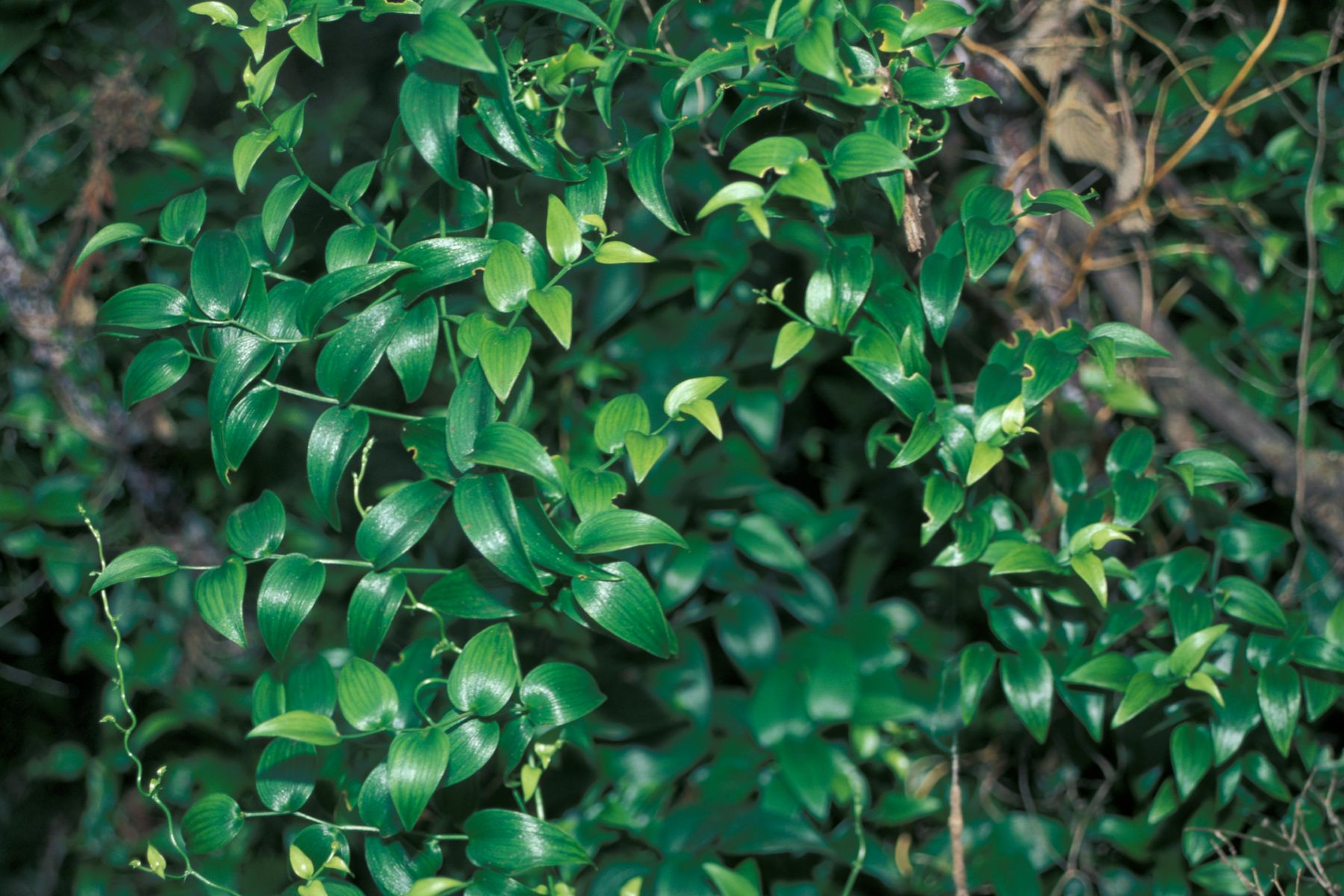
The Problem and Impacts
Bridal creeper entered the country as a garden plant and is now a major weed of bushland in southern Australia, where its climbing stems and foliage smother native plants. It forms a thick mat of underground tubers which impedes the root growth of other plants and often prevents seedling establishment.
Bridal creeper invades dry coastal vegetation, heath land and
healthy woodland, mallee shrubland, lowland grassland and
grassy woodland, dry sclerophyll forest and woodland, damp sclerophyll forest, riparian vegetation, rock outcrop vegetation, and warm temperate rainforest.
In South Australia and southwestern Western Australia bridal creeper is considered the most important weed threat to biodiversity.
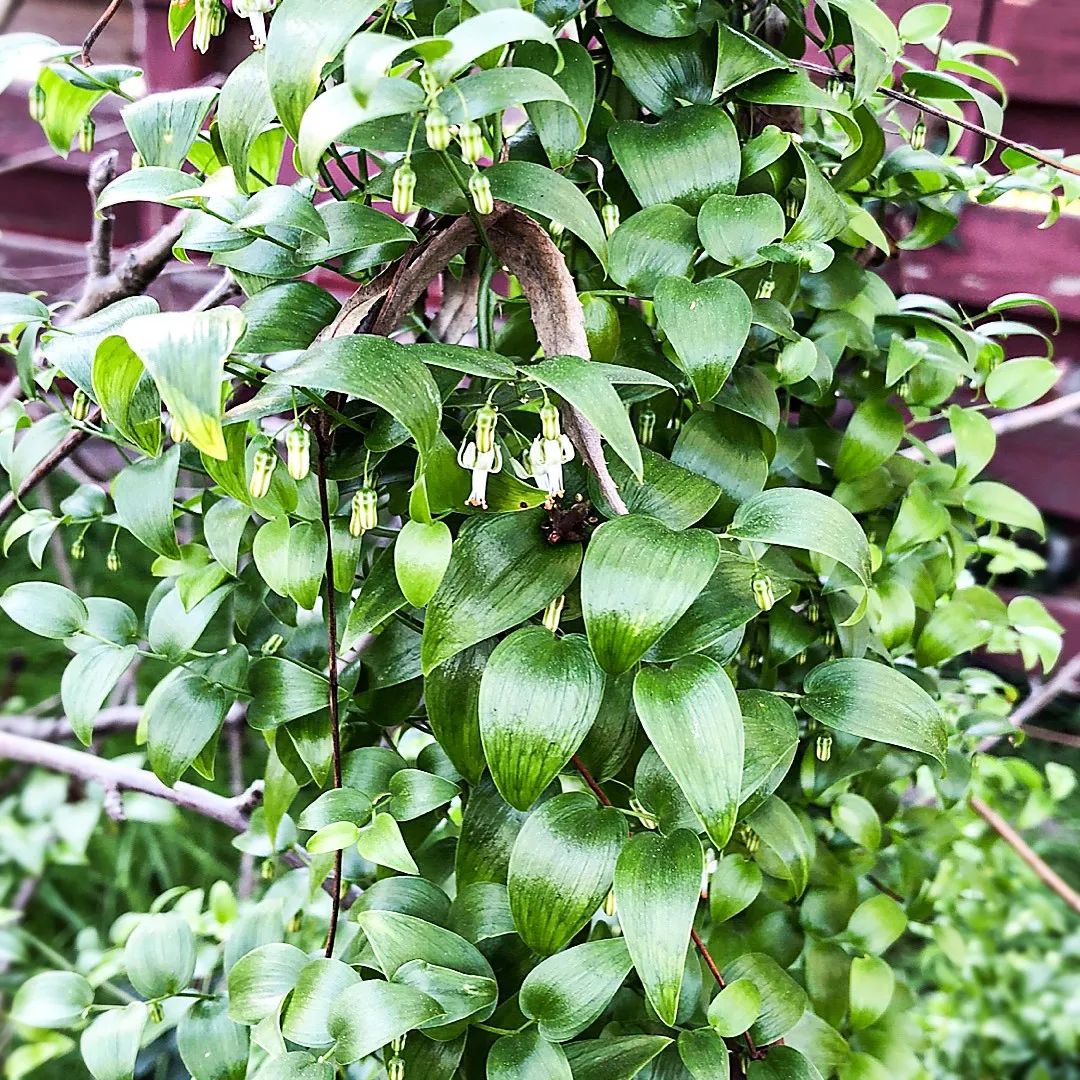
Growth Habit & Biological Weak Link
Bridal creeper is a climbing herb or vine to three metres, arising from a short rhizome attached to tuberous roots. Bridal creeper plants take at least three years to reach flowering size - the flowers appearing along the length of the shoots in August and September. The green berries turn red in late spring to early summer.
An underground mat of rhizomes and tubers make up the bulk of the plant. These tubers provide water, energy and nutrients that enable the plant to survive over summer and allow rapid shoot growth in autumn.
Bridal Creeper has a number of features which make it difficult to control – its tuber reserves provide a buffer against adverse seasons, it has a wide germination range and, unlike some other weeds, it can invade undisturbed sites. But there are also weaknesses in its biology – it has a relatively short-lived seed-bank, seed production only occurs on early emerging stems, and the seed output in old infestations is small.
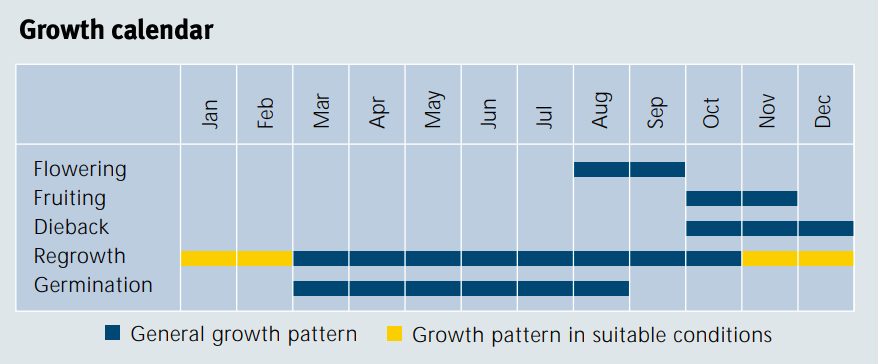
Management & Control Options
Because of extensive storage reserves in the root tissues, the most effective means of managing bridal creeper involves integrating a range of treatment techniques:
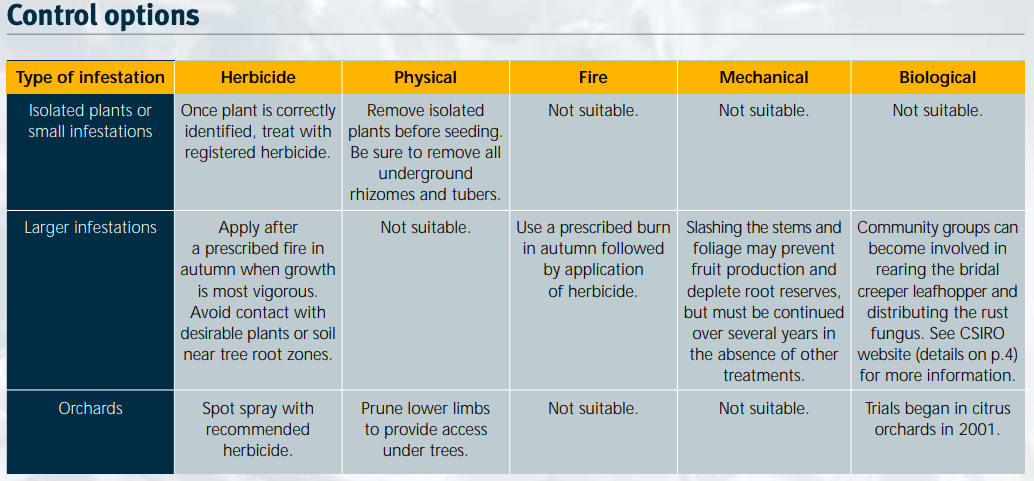
Chemical Control
For more details go to:
https://www.agric.wa.gov.au/herbicides/bridal-creeper-control
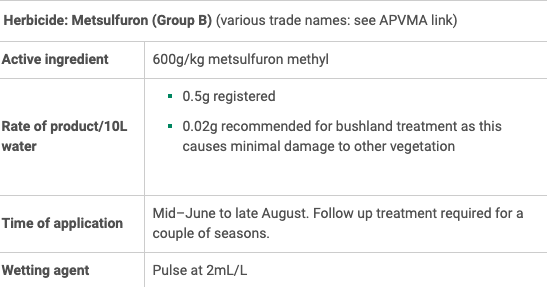
Biological Control
Bridal Creeper Rust and Leaf Hoppers as soon as possible. Leaf Hopper and Rust may be transferred from infected areas by collecting a bag full of infested and infected green stems and leaves, sealing it so the leaf hoppers don't escape and then transferring it to the infestation as quickly as possible and rubbing it into the Bridal Creeper greenery.
Rehabilitation & Prevention
Prevent new outbreaks: Do not plant bridal creeper in your garden; replace existing plants with desirable species and safely dispose of garden waste. Keep 500 m buffer zones for bridal creeper around the edge of an infestation.
Follow-up: After fire treat regrowth carefully with herbicide to limit above ground growth and further reduce the stored root reserves. Monitor infestations regularly and over several years because of the probability of regrowth from remnants of the root system. Regularly check for new outbreaks. It may be possible to hand dig roots in new or small infestations.

4. Weed Wattles
Acacia species
Not to be confused with our own Golden Wreath Wattle (Acacia Saligna), Eastern States Wattles have become problematic in the South West due to their previous popularity as ornamental trees & as soil stabilisers. These include:
- Sydney Golden Wattle (A. longifolia)
- Flinders Range Wattle (A. iteaphylla) Cootamundra Wattle (A. baileyana)
- Silver Wattle (A. dealbata)
- Queensland Silver Wattle (A. podalyriifolia) Golden Wattle (A. pycnantha)
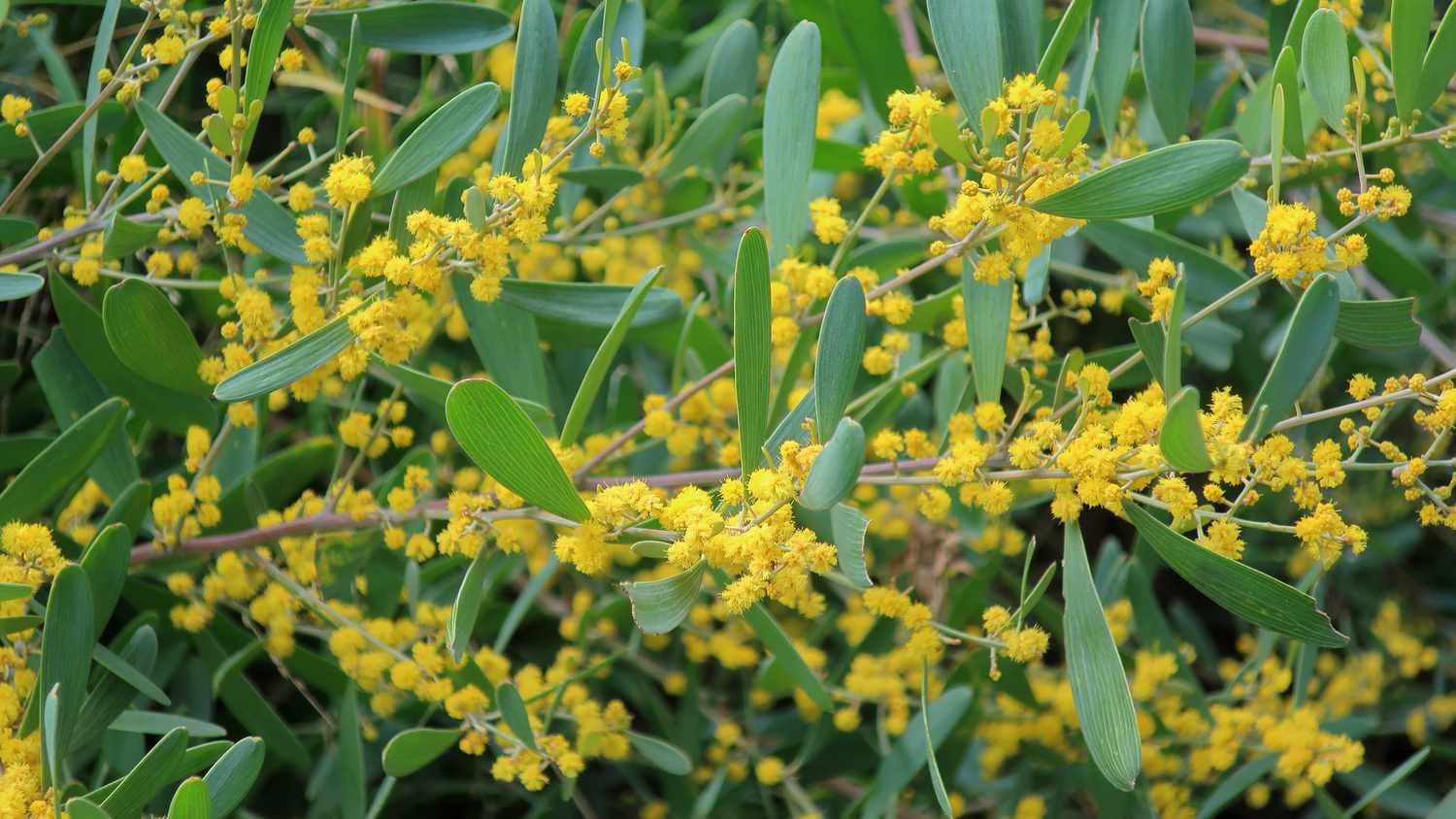
The Problem / Impact
The Problem
Weed Wattles are not a problem in their own natural geographic locations where local seed-eating insects keep them in check. But this natural control does not occur in Western Australia where these wattles reproduce prolifically by seed.
The Impact
Increased Bushfire Threat:
Wattles are nitrogen fixers. When they grow in an area that has been disturbed the combination of disturbed soil and extra nitrogen encourages exotic grasses to invade. As the grasses dry out in summer, they increase the risk of bushfire. Fire stimulates more wattle seeds to germinate and a destructive cycle is set in motion.
Out Compete Native Species:
Under optimum conditions can form dense, almost impenetrable thickets of trees effectively wiping out all other native plants and habitat for native animals.
Growth Habit & Biological Weak Link
Perennial, trees or spreading shrubs up to 8 m high (variety dependent). The main flowering period is June to October. Seedlings germinate in winter producing acacia type juvenile leaves for the first season or two.
The juveniles quickly grow to maturity and become prolific producers of pods and seeds in 2-3 years. Thickets are often formed and few species grow in the understorey.
A weed wattle's biological weak link is prior to flowering (mature plants) & at seedling stage. Trees are most effectively controlled using herbicides between March and August. It is important that felled trees and branches are removed as they can reproduce vegetatively by developing adventurous roots where the plant meets the soil.

Management & Control Options
Seedlings
Wattles are best controlled as seedlings when they are easy to lever and hand‐pull or over‐ spray with a 10% solution glyphosate.
As seed may remain dormant for more than 10 years, annual follow up control of newly emerged seedlings is essential.
Mature Plants
Pruning the flowers before they set seed is not a practical option once these wattles reach a certain size. The only sure way to prevent seed spreading is to fell the tree and then painting the freshly cut stump with a solution of 50% glyphosate to prevent suckering and regrowth of the plant.
Alternatively, trees can be poisoned and killed without felling by injecting them with a 50% glyphosate solution, or by painting the bark around the base of the tree with a 250 ml mix of Access® in 15 L of diesel.
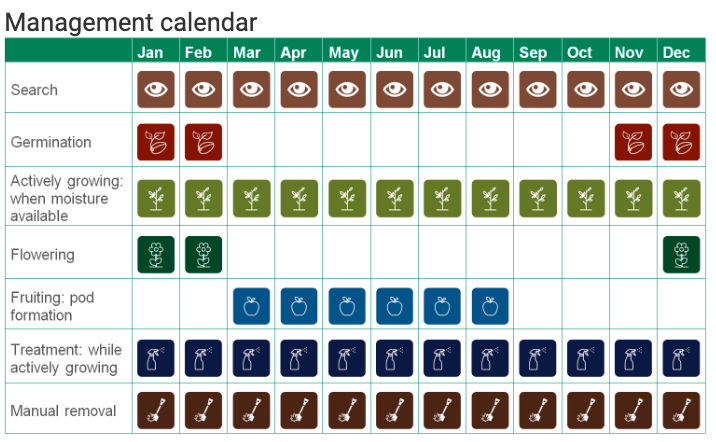
Rehabilitation & Prevention
You can help by replacing potential weed wattles growing on your property with native trees or with other species that have less potential to become weeds in native bushland.
Areas that have been cleared of weed wattles need to be revegetated as soon as practicably possible to out compete any germinating seeds that may be left behind.
Try planting our own native wattle instead - Golden Wreath Wattle (Acacia Saligna).

Sources of Information for this toolkit:
- A Guide to Arum Lily Control – Nature Conservation
- DPIRD Website
- Weed Management Guide (Rubus fruticosus aggregate) - CRC for Australian Weed Management and the Commonwealth Department of the Environment and Heritage
- Weed Management Guide (Bridal creeper - Asparagus asparagoides) - CRC for Australian Weed Management and the Commonwealth Department of the Environment and Heritage
- A Review of Bridal Creeper Control in the Southwest of Western Australia 2018 – Report by Geraldine and Steve Janicke September 2018, Oyster Harbour Catchment Group
- HerbiGuide - Detailed information about weed species and control methods.
Further Reading:
- Moore, J & Wheeler, J (2019) Southern Weeds and their control. Department of Agriculture and Food WA.
- Brown, K & Brooks, K (2002) Bushland Weeds, A practical guide to their management. Environmental Weeds Action Network
- Hussey B.M.J, Keighery G.J, Dodd J., Lloyd S.G., Cousens R.D (2007) Western Weeds – A guide to the weeds of Western Australia, (2nd Edition) The Weeds Society of Western Australia, Victoria Park, Western Australia.
Lower Blackwood Land Conservation District Committee
Who are we?
We are a not-for-profit, community managed, constituted and independent land care organisation with a membership representative of landholders with an interest in sustainable agriculture, catchment management, the broader environment and river health in the Lower Blackwood catchment.
What do we do?
Located in the southwest corner of Western Australia, our catchment is high in biodiversity, has high value assets and productive agricultural land. We aim to protect and conserve this special environment in the South West by taking a whole of landscape and community approach.
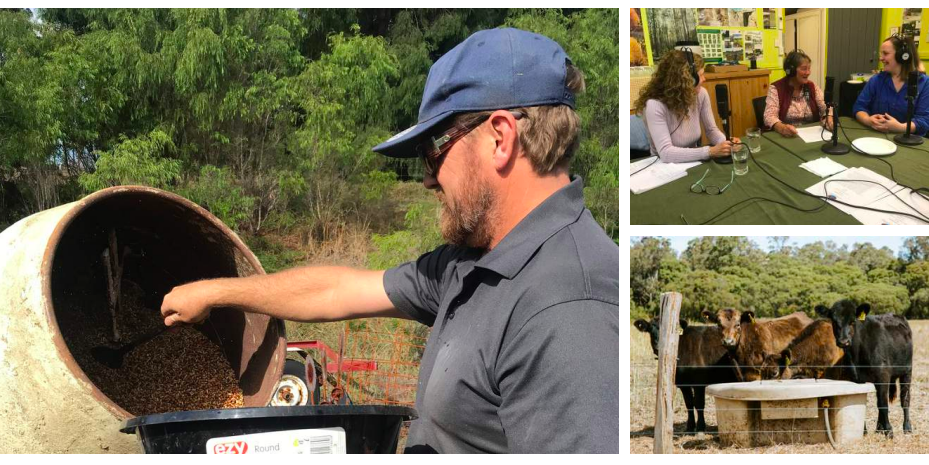
How can we help you?
We work with farmers, land managers, local government, business and traditional owners to promote sustainable & productive agriculture, in a healthy & vibrant community.
On-Ground Works:
Funding & funded services are available to eligible landholders for a range of on-ground works including:
- Stock exclusion fencing & revegetation of riparian zones
- Soil testing to support better fertiliser decisions
- Smart Farming Partnerships – local fertiliser trials
- Feral Pig Control
- Weed Control in Waterways
Events
We are great at getting people together to talk. Our monthly Talkin' After Hours Free Workshop & Networking BBQ brings together professionals, experts & landholders to talk about land care topics that are important to them.
For our next event take a look on our website

Talkin' After Hours is the LCDC's Online Community & Information Hub. It is an invaluable resource and go to space for landholders wanting information on sustainable agriculture and landcare issues. It doesn't matter where you are on your landcare journey, young or old, new or experienced, a lifestyler or a farmer, our service is for you!
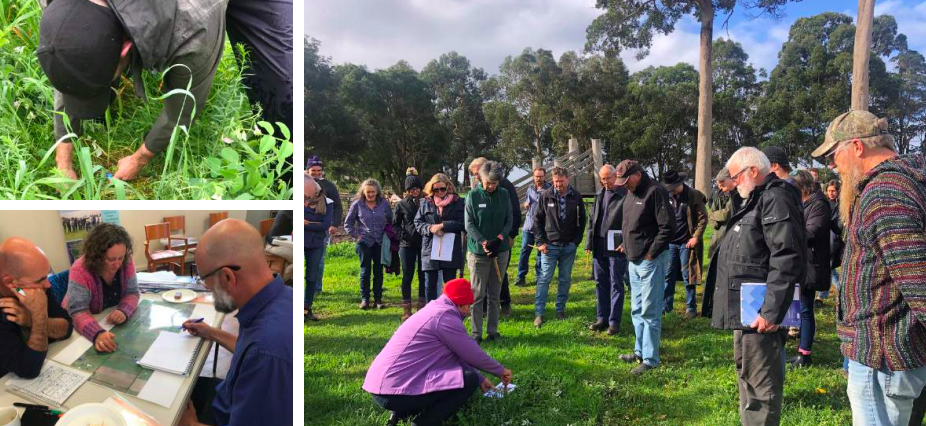
Get Involved Now!
Subscribe to our monthly enews
Join Talkin' After Hours, our Online Community & Information Hub
Register your interest in funded on-ground works

©Talkin' After Hours. This article cannot be reproduced without the permission of the Lower Blackwood LCDC


